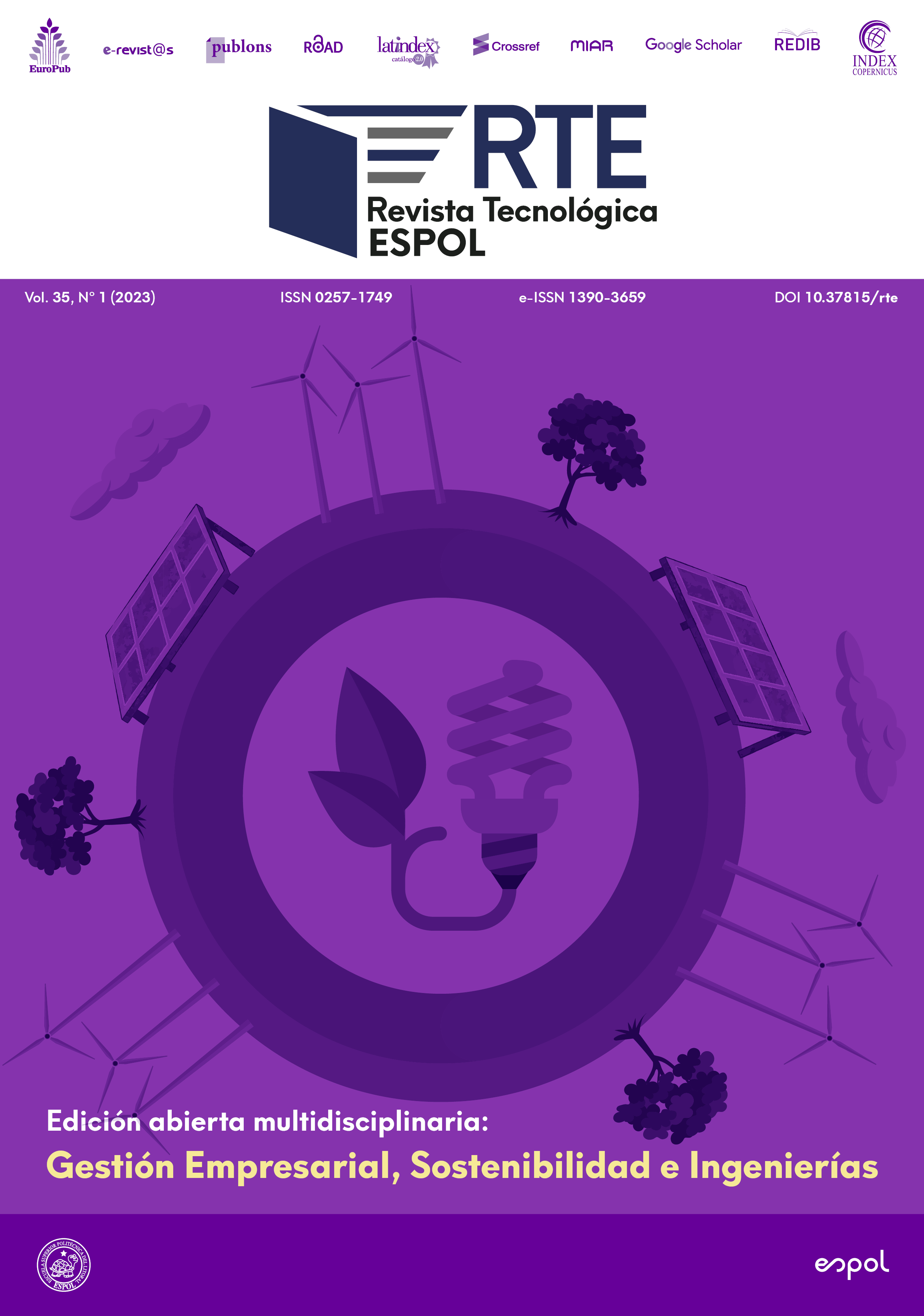El objetivo de este estudio es investigar los procesos de reciclaje y reuso de los residuos generados por las curtiembres en Ecuador y el mundo. Para alcanzar este propósito, se utilizaron publicaciones de alto impacto y bases de datos gubernamentales para recopilar información. Se identificaron varios procesos de reciclaje y reuso para los residuos sólidos de las curtiembres, estos incluyeron la producción de pegamentos, colágeno, gelatina, aminoácidos, biocombustibles, biogás y lubricantes para cueros. Además, se encontró que es posible recuperar sales de cromo de las aguas residuales, lo que permite reutilizarlas. El estudio también reveló que países como India, Bangladesh y China, que son los principales productores de cuero, aplican tecnologías avanzadas de reciclaje en sus curtiembres. En contraste, países como Italia, Alemania y España se enfocan más en la conversión química de los residuos sólidos de la curtiduría. En Ecuador, no existen publicaciones sobre el reciclaje de residuos de tenerías, y las pocas que abordan este tema se centran en la reutilización de carnazas, restos de piel y obtención de queratina del pelo residual. Esta falta de interés, en la adecuada gestión de residuos en las curtiembres, puede atribuirse a la informalidad y la falta de aplicación estricta de la legislación ambiental en el país. En conclusión, es importante regularizar el sector industrial de curtiembres en Ecuador y promover procesos de reciclaje y reuso que proporcionarán beneficios económicos y sostenibilidad estas industrias. El estudio resalta la necesidad de mejorar la gestión de residuos en las curtiembres ecuatorianas y seguir el ejemplo de países que han implementado tecnologías avanzadas de reciclaje.

Esta obra está bajo una licencia internacional Creative Commons Atribución-NoComercial 4.0.
Referencias
Agustini, C., Costa, M., & Gutterres, M. (2020a). Tannery wastewater as nutrient supply in production of biogas from solid tannery wastes mixed through anaerobic co-digestion. Process Safety and Environmental Protection, 135, 38–45. https://doi.org/10.1016/j.psep.2019.11.037
Ayele, M., Limeneh, D., Tesfaye, T., Mengie, W., Abuhay, A., Haile, A., & Gebino, G. (2021). A Review on Utilization Routes of the Leather Industry Biomass. In Advances in Materials Science and Engineering (Vol. 2021). Hindawi Limited. https://doi.org/10.1155/2021/1503524
Basaran, B., Yorgancioglu, A., & Onem, E. (2018). Reorganization of Beaming in Ecological Perspective. Journal of Africa Leather and Leather Producuts Advances, 4(1), 49–54. https://doi.org/10.15677/jallpa.2018.v4i1.16
Bustos, A. R. M. (2020). The Role of ICP-MS in Separation Science. In Chromatographia (Vol. 83, Issue 2, pp. 145–147). Springer. https://doi.org/10.1007/s10337-019-03846-2
Butt, M. Q., Zeeshan, N., Ashraf, N. M., Akhtar, M. A., Ashraf, H., Afroz, A., Shaheen, A., & Naz, S. (2021). Environmental impact and diversity of protease-producing bacteria in areas of leather tannery effluents of Sialkot, Pakistan. Environmental Science and Pollution Research, 28(39), 54842–54851. https://doi.org/10.1007/s11356-021-14477-2
Calucho, J. (2019). Diseño de la planta de tratamiento de aguas residuales para la curtiembre San Miguel de la ciudad de Ambato Provincia de Tungurahua periodo 2018 [Universidad Tecnológica Indoamérica]. https://repositorio.uti.edu.ec/bitstream/123456789/1134/1/Calucho%20Sailema%20Juan%20Nolberto.pdf
Camacho, R. (2019). Diseño y construcción de una máquina compactadora de residuos sólidos para la empresa curtiembre Quisapincha [Escuela Politécnica Nacional]. https://bibdigital.epn.edu.ec/bitstream/15000/20073/1/CD-9512.pdf
CFN. (2021). Ficha sectorial cuero subgerencia de análisis de productos y servicios. 1–15. https://www.cfn.fin.ec/wp-content/uploads/downloads/biblioteca/2021/fichas-sectoriales-2-trimestre/Ficha-Sectorial-Cuero.pdf
Cheng, Y., Yang, S., & Tao, E. (2021). Magnetic graphene oxide prepared via ammonia coprecipitation method: The effects of preserved functional groups on adsorption property. Inorganic Chemistry Communications, 128. https://doi.org/10.1016/j.inoche.2021.108603
Cisneros, D. (2018). Propuesta de gestión de residuos municipales para la ciudad de Ambato (Ecuador) [Universitat Politécnica de Catalunya]. https://upcommons.upc.edu/bitstream/handle/2117/125991/TFM DCisneros.pdf
Corporación de desarrollo de Ambato y Tungurahua. (2022). Programa integral para la reactivación económica del sector cuero y calzado de Tungurahua, encadenamiento productivo y comercial desde del enfoque de la innovación de Ambato y Tungurahua.
Chuquimango, J. (2019). Influencia de la concentración del Hidróxido de calcio y peso del pelo vacuno de residuos de curtiembre para la obtención de queratina. Universidad César Vallejo.
Du, J., Shang, X., Li, T., & Guan, Y. (2022). Recycling and modeling of chromium from sludge produced from magnetic flocculation treatment of chromium-containing wastewater. Process Safety and Environmental Protection, 157, 20–26. https://doi.org/10.1016/j.psep.2021.10.052
Fernández, V., Cuartas, B., Bes-Piá, M., & Mendoza, J.-A. (2022). Application of Nanofiltration and Reverse Osmosis Membranes for Tannery Wastewater Reuse. Water, 14(13), 2035. https://doi.org/10.3390/w14132035
Forero-Nuñez, C. (2022). Vista de Mejoramiento energético de residuos sólidos de cuero curtido mediante tratamiento térmico. Ingeniería y Desarrollo. https://rcientificas.uninorte.edu.co/index.php/ingenieria/article/view/5353/6698
Gebremariam, E. C., Malede, Y. C., Prabhu, S. V., Varadharajan, V., Manivannan, S., Jayakumar, M., & Gurunathan, B. (2023). Development of bio-based adhesive using tannery shaving dust: Process optimization using statistical and artificial intelligence techniques. Bioresource Technology Reports, 22, 101413. https://doi.org/10.1016/J.BITEB.2023.101413
González, A., Alaña, T., & Gonzaga, S. (2017). La Gestión Ambiental en la Competitividad de las Pymes del Ecuador. INNOVA Research Journal, 2(8.1), 236–248. https://doi.org/10.33890/innova.v2.n8.1.2017.371
Hansen, E., Aquim, R., & Gutterres, M. (2021). Environmental assessment of water, chemicals and effluents in leather post-tanning process: A review. In Environmental Impact Assessment Review (Vol. 89). Elsevier Inc. https://doi.org/10.1016/j.eiar.2021.106597
Hashem, M., Sheikh, M., Rahamatullah, Biswas, M., Hasan, M., & Payel, S. (2021a). Composite fabrication from fat extracted limed fleshing: solid waste management in tannery. Bangladesh Journal of Scientific and Industrial Research, 56(3), 215–222. https://doi.org/10.3329/bjsir.v56i3.55969
Hongrui, M., Zhou, J., Hua, L., Cheng, F., Zhou, L., & Qiao, X. (2017). Chromium recovery from tannery sludge by bioleaching and its reuse in tanning process. Journal of Cleaner Production, 142, 2752–2760. https://doi.org/10.1016/j.jclepro.2016.10.193
INEC. (2020). Índice de producción de la industria manufacturera.
INEN. (2018, July 11). Más empresas se suman a la Ruta de la Calidad. https://www.normalizacion.gob.ec/mas-empresas-se-suman-a-la-ruta-de-la-calidad/
Jara, E. (2018). Facultad de Ingeniería y Arquitectura Escuela Profesional de Ingeniería Ambiental [Universida César Vallejo]. moz-extension://6422d3bd-5446-4050-bcfc-dd5150aa1bd8/enhanced-reader.html?openApp&pdf=https%3A%2F%2Frepositorio.ucv.edu.pe%2Fbitstream%2Fhandle%2F20.500.12692%2F54374%2FJara_VEA-SD.pdf%3Fsequence%3D1%26isAllowed%3Dy
Kadathur, R., Murali, S., Balaraman, M., Sellamuthu, J., & Palanivel, S. (2022a). Effective utilization of tannery hair waste to develop a high-performing re-tanning agent for cleaner leather manufacturing. Journal of Environmental Management, 302, 114029. https://doi.org/10.1016/j.jenvman.2021.114029
Kamaraj, C., Lakshmi, S., Rose, C., & Muralidharan, C. (2017). Wet Blue Fiber and Lime from Leather Industry Solid Waste as Stabilizing Additive and Filler in Design of Stone Matrix Asphalt. Asian Journal of Research in Social Sciences and Humanities, 7(11), 240. https://doi.org/10.5958/2249-7315.2017.00547.0
Klein, R., Hansen, É., & Aquim, P. (2022a). Water reuse in the post-tanning process: Minimizing environmental impact of leather production. Water Science and Technology, 85(1), 474–484. https://doi.org/10.2166/wst.2021.620
Korpe, S., & Venkateswara, R. (2021). Application of advanced oxidation processes and cavitation techniques for treatment of tannery wastewater - A review. In Journal of Environmental Chemical Engineering (Vol. 9, Issue 3). Elsevier Ltd. https://doi.org/10.1016/j.jece.2021.105234
Köseoglu, K., Cengizler, H., Israil, L. I., & Polat, H. (2017). Tannery wastewater sediments produced by clinoptiolite/polyacrylamide-aided flocculation as a clay additive in brick making. Journal of the Australian Ceramic Society, 53(2), 719–731. https://doi.org/10.1007/s41779-017-0085-z
Lascano, N., Morales, L., Cordova, A., & Chisag, G. (2019). Modelo de responsabilidad social del sector curtiembre del cantón Ambato,Ecuador. In Resvita Inclusiones (Vol. 6, Issue Enero).
Li, Y., Guo, R., Lu, W., & Zhu, D. (2019). Research progress on resource utilization of leather solid waste. Journal of Leather Science and Engineering, 1(1). https://doi.org/10.1186/s42825-019-0008-6
Liknaw, G., Tekalign, T., & Guya, K. (2017). Impacts of Tannery Effluent on Environments and Human Health: A Review Article. College of Natural and Computational Science, 54.
Liu, X., Yue, O., Wang, X., Hou, M., Zheng, M., & Jiang, H. (2020). Preparation and application of a novel biomass-based amphoteric retanning agent with the function of reducing free formaldehyde in leather. Journal of Cleaner Production, 265. https://doi.org/10.1016/j.jclepro.2020.121796
Maina, P., Ollengo, M. A., & Nthiga, E. W. (2019). Trends in leather processing: A Review. International Journal of Scientific and Research Publications (IJSRP), 9(12), p9626. https://doi.org/10.29322/ijsrp.9.12.2019.p9626
Maraz, K. M. (2021). Benefits and problems of chrome tanning in leather processing: Approach a greener technology in leather industry. Materials Engineering Research, 3(1), 156–164. https://doi.org/10.25082/MER.2021.01.004
Masabanda, M., Echegaray, C., Delgado, V., & Echegaray, D. (2017). Análisis y localización de curtiembres en Ecuador. Revista de Ciencias de Seguridad y Defensa(ESPE), 2(Análisis y Localización de curtiembres en el cantón Ambato, como parte de patrimonio cultural en el Ecuador), 41–45.
Masilamani, D., Ariram, N., Balaraman, M., & Palanivel, S. (2023). An integrated process for effective utilization of collagenous protein from raw hide trimmings: Valorization of tannery solid wastes. Journal of Cleaner Production, 137705. https://doi.org/10.1016/J.JCLEPRO.2023.137705
Mayta, R., & Mayta, J. (2017). Remoción de cromo y demanda química de oxígeno de aguas residuales de curtiembre por electrocoagulación. Revista de La Sociedad Química Del Perú, 83(3), 331–340. http://www.scielo.org.pe/scielo.php?script=sci_arttext&pid=S1810-634X2017000300008&lng=es&nrm=iso&tlng=en
Mera Parra, C. P. (2018). Análisis del carbón activado como filtro en el tratamiento de aguas residuales provenientes de la empresa “Curtiembre Quisapincha” del cantón Ambato provincia de Tungurahua [Universidad Técnica de Ambato]. https://repositorio.uta.edu.ec:8443/jspui/handle/123456789/27452
Figueroa, L., & -Perú, L. (2014). Tratamiento de las aguas residuales del proceso de curtido tradicional y alternativo que utiliza acomplejantes de cromo. Revista de La Sociedad Química Del Perú, 80(3), 183–191. http://www.scielo.org.pe/scielo.php?script=sci_arttext&pid=S1810-634X2014000300005&lng=es&nrm=iso&tlng=es
Moscoso, A. M. (2019). Comentario legislativo: “El nuevo marco jurídico en materia ambiental en Ecuador: estudio sobre el Código Orgánico del Ambiente” « Actualidad Jurídica Ambiental | AJA. https://www.actualidadjuridicaambiental.com/comentario-legislativo-el-nuevo-marco-juridico-en-materia-ambiental-en-ecuador-estudio-sobre-el-codigo-organico-del-ambiente/
Murshid, J., Tushar, U., Abdur, R., & Hai, Q. (2018). Ammonia-Reduced Deliming using Glycolic Acid and EDTA and its Effect on Tannery Effluent and Quality of Leather. Leather Research Institute, 1–5.
Pan, F., Xiao, Y., Zhang, L., Zhou, J., Wang, C., & Lin, W. (2023). Leather wastes into high-value chemicals: Keratin-based retanning agents via UV-initiated polymerization. Journal of Cleaner Production, 383, 135492. https://doi.org/10.1016/J.JCLEPRO.2022.135492
Parada, M., Andrade, M., Carreras, F., & Flores, B. (2018). Obtención de un tensoactivo a partir del proceso de recuperación de sebo de las industrias de curtiembre. Perfiles, 2.
Parada, M., Manobanda, P., Tapia, Z., Zambrano, M., Rennola, L., & Castillo, Y. (2019). Estudio de las tecnologías para el tratamiento de los efluentes generados por una planta de curtiembres en Ecuador. Redalcy.Org, 40(2), 139–153.
Parisi, M., Nanni, A., & Colonna, M. (2021). polímeros Reciclaje de pieles curtidas al cromo y su utilización como materiales poliméricos y compuestos a base de polímeros: una revisión. Polímeros. https://doi.org/10.3390/polim13030429
Payel, S., Hashem, M. A., & Hasan, M. A. (2021). Recycling biochar derived from tannery liming sludge for chromium adsorption in static and dynamic conditions. Environmental Technology and Innovation, 24. https://doi.org/10.1016/j.eti.2021.102010
Puente, C., Jara, J., Guapulema, A., & Burbano, D. (2020). Composting treatment of fur waste originating from tannery. F1000Research, 9, 228. https://doi.org/10.12688/f1000research.22244.1
Puhazhendi, P., Ajitha, P., Sujiri, A., Parthasarathy, G., Sellamuthu, N., Niraikulam, A., Saravanan, P., & Ramudu, K. (2022). Recycling of tannery fleshing waste by a two step process for preparation of retanning agent. Process Safety and Environmental Protection, 157, 59–67. https://doi.org/10.1016/j.psep.2021.11.003
Puhazhselvan, P., Pandi, A., Sujiritha, P. B., Antony, G. S., Jaisankar, S. N., Ayyadurai, N., Saravanan, P., & Kamini, N. R. (2022). Recycling of tannery fleshing waste by a two step process for preparation of retanning agent. Process Safety and Environmental Protection, 157, 59–67. https://doi.org/10.1016/J.PSEP.2021.11.003
Quipo, F. (2020). Obtención de una base proteica a partir de los residuos sólidos de curtiembres para la manufactura de alimentos balanceados [Universidad Nacional Abierta y a Distancia. Escuela de Ciencias Básica, Tecnología e Ingeniería Especialización en Proesos de Alimentos y Biomateriales]. https://repository.unad.edu.co/bitstream/handle/10596/35692/fequipom.pdf?sequence=1&isAllowed=y
Raguraman, R., & Sailo, L. (2017). Efficient chromium recovery from tannery sludge for sustainable management. International Journal of Environmental Science and Technology, 14(7), 1473–1480. https://doi.org/10.1007/s13762-017-1244-z
Rajamanickam, R., Subramanian, S., Ganapathy, P., & Chiampo, F. (2022). Zero Liquid Discharge System for the Tannery Industry—An Overview of Sustainable Approaches. Recycling, 7(3). https://doi.org/10.3390/recycling7030031
Ravindran, B., Lee, S. R., Chang, S. W., Nguyen, D. D., Chung, W. J., Balasubramanian, B., Mupambwa, H. A., Arasu, M. V., Al‐Dhabi, N. A., & Sekaran, G. (2019). Positive effects of compost and vermicompost produced from tannery waste-animal fleshing on the growth and yield of commercial crop-tomato (Lycopersicon esculentum L.) plant. Journal of Environmental Management, 234, 154–158. https://doi.org/10.1016/J.JENVMAN.2018.12.100
Rigueto, C. V. T., Rosseto, M., Krein, D. D. C., Ostwald, B. E. P., Massuda, L. A., Zanella, B. B., & Dettmer, A. (2020). Alternative uses for tannery wastes: a review of environmental, sustainability, and science. Journal of Leather Science and Engineering, 2(1). https://doi.org/10.1186/s42825-020-00034-z
Rimawi, W., Shaheen, S., & Salim, H. (2020a). Removal of Chromium Ions from Tannery Wastewater using Cactus Powder. Oriental Journal of Chemistry, 36(1), 132–138. https://doi.org/10.13005/ojc/360118
Rivera, M., Guijarro, C., Tapia, Z., & Mayorga, D. (2020). Production of balanced food for pets by processing tannery waste generated in the stages of splitting and fleshing. Perfiles, 1. http://dspace.espoch.edu.ec/bitstream/123456789/14582/1/per_n23_v1_09.pdf
Salimin, Z., Satiyoaji, F. W., Prasetya, D. A., & Chafidz, A. (2020). Chemical treatment of liquid waste generated from leather tannery industry by using alum as coagulant material. Materials Science Forum, 991 MSF, 178–184. https://doi.org/10.4028/www.scientific.net/MSF.991.178
Salinas, V. (2014). El cuero producción industrial y artesanal en el Ecuador. Universidad de Azuay.
Sawalha, H., Alsharabaty, R., Sarsour, S., & Al-Jabari, M. (2019a). Wastewater from leather tanning and processing in Palestine: Characterization and management aspects. Journal of Environmental Management, 251. https://doi.org/10.1016/j.jenvman.2019.109596
Saxena, G., Purchase, D., & Bharagava, R. (2020). Environmental Hazards and Toxicity Profile of Organic and Inorganic Pollutants of Tannery Wastewater and Bioremediation Approaches. In Bioremediation of Industrial Waste for Environmental Safety (pp. 381–398). Springer Singapore. https://doi.org/10.1007/978-981-13-1891-7_17
Seggiani, M., Altieri, R., Cinelli, P., Esposito, A., & Lazzeri, A. (2021). Thermoplastic Blends Based on Poly(Butylene Succinate-co-Adipate) and Different Collagen Hydrolysates from Tanning Industry: I—Processing and Thermo-mechanical Properties. Journal of Polymers and the Environment, 29(2), 392–403. https://doi.org/10.1007/s10924-020-01880-y
Selvaraj, H., Aravind, P., George, H. S., & Sundaram, M. (2020). Removal of sulfide and recycling of recovered product from tannery lime wastewater using photoassisted-electrochemical oxidation process. Journal of Industrial and Engineering Chemistry, 83, 164–172. https://doi.org/10.1016/j.jiec.2019.11.024
Selvaraj, R., Santhanam, M., Selvamani, V., Sundaramoorthy, S., & Sundaram, M. (2018). A membrane electroflotation process for recovery of recyclable chromium(III) from tannery spent liquor effluent. Journal of Hazardous Materials, 346, 133–139. https://doi.org/10.1016/j.jhazmat.2017.11.052
Shukla, A., Mahmood, Z., & Singh, L. K. (2021a). Studies on recovery of heavy metals from tannery wastewater. International Journal of Engineering, Science and Technology, 13(1), 76–80. https://doi.org/10.4314/ijest.v13i1.11s
Silva, M., & Salinas, D. (2022). La contaminación proveniente de la industria curtiembre, una aproximación a la realidad ecuatoriana. Revista Científica UISRAEL, 9(1), 69–80. https://doi.org/10.35290/rcui.v9n1.2022.427
Souza, F., Benvenuti, J., Meyer, M., Wulf, H., Klüver, E., & Gutterres, M. (2022a). Extraction of keratin from unhairing of bovine hide. Chemical Engineering Communications, 209(1), 118–126. https://doi.org/10.1080/00986445.2020.1842740
Suhendra, A. D., Asworowati, R. D., & Ismawati, T. (2020). Usos y aplicaciones de los subproductos de la industria del cuero. Akrab Juara, 5(1), 43–54. http://www.akrabjuara.com/index.php/akrabjuara/article/view/919
Tamersit, S., Bouhidel, K. E., & Zidani, Z. (2018). Investigation of electrodialysis anti-fouling configuration for desalting and treating tannery unhairing wastewater: Feasibility of by-products recovery and water recycling. Journal of Environmental Management, 207, 334–340. https://doi.org/10.1016/j.jenvman.2017.11.058
Tasca, A., & Puccini, M. (2019). Leather tanning: Life cycle assessment of retanning, fatliquoring and dyeing. Journal of Cleaner Production, 226, 720–729. https://doi.org/10.1016/j.jclepro.2019.03.335
Thankaswamy, S., Sundaramoorthy, S., Palanivel, S., & Ramudu, K. N. (2018a). Improved microbial degradation of animal hair waste from leather industry using Brevibacterium luteolum (MTCC 5982). Journal of Cleaner Production, 189, 701–708. https://doi.org/10.1016/j.jclepro.2018.04.095
Tujjohra, F., Alam, M. S., Rahman, M. M., & Rahman, M. M. (2023). An eco-friendly approach of biodiesel production from tannery fleshing wastes by crude neutral protease enzyme. Cleaner Engineering and Technology, 14, 100638. https://doi.org/10.1016/J.CLET.2023.100638
UN-FAO. (2013). World statistical compendium for raw hides and skins, leather and leather footwear 1993-2012. In Trade and Markets Division. http://www.fao.org/fileadmin/templates/est/COMM_MARKETS_MONITORING/Hides_Skins/Documents/COMPENDIUM2013.pdf
Urbina, A., Machuca, N., & Fiderman, B. (2021). molecules Advanced Oxidation Processes and Biotechnological Alternatives for the Treatment of Tannery Wastewater. https://doi.org/10.3390/molecules26113222
Valle, J. (2018). Ddesarrollo de una ingeniería conceptual para el tratamiento de aguas residuales, provenientes de curtiembres de tipo artesanal e industrial de la provincia de Tungurahua [Escuela Politécnica de Chimborazo]. http://dspace.espoch.edu.ec/bitstream/123456789/11053/1/96T00534.pdf
Verma, T., Tiwari, S., Tripathi, M., & Ramteke, P. (2019a). Treatment and Recycling of Wastewater from Tannery. In Microbial Ecology of Wastewater Treatment Plants (pp. 51–90). https://doi.org/10.1007/978-981-13-1468-1_3
Villena, M., Caracciolo, N., & Boeykens, S. (2018). Reuse of leather waste: Collagen hydrolyzate for the treatment of tanneries effluents. Journal of Urban and Environmental Engineering, 12(2), 287–292. https://doi.org/10.4090/juee.2018.v12n2.287292
Yadav, A., Raj, A., Purchase, D., Ferreira, L. F. R., Saratale, G. D., & Bharagava, R. N. (2019). Phytotoxicity, cytotoxicity and genotoxicity evaluation of organic and inorganic pollutants rich tannery wastewater from a Common Effluent Treatment Plant (CETP) in Unnao district, India using Vigna radiata and Allium cepa. Chemosphere, 224, 324–332. https://doi.org/10.1016/j.chemosphere.2019.02.124
Yasir, M. W., Siddique, M. B. A., Shabbir, Z., Ullah, H., Riaz, L., Nisa, W. U., Shafeeq-ur-rahman, & Shah, A. A. (2021a). Biotreatment potential of co-contaminants hexavalent chromium and polychlorinated biphenyls in industrial wastewater: Individual and simultaneous prospects. In Science of the Total Environment (Vol. 779). Elsevier B.V. https://doi.org/10.1016/j.scitotenv.2021.146345
Yuvaraj, A., Karmegam, N., Ravindran, B., Chang, S. W., Awasthi, M. K., Kannan, S., & Thangaraj, R. (2020). Recycling of leather industrial sludge through vermitechnology for a cleaner environment—A review. Industrial Crops and Products, 155. https://doi.org/10.1016/j.indcrop.2020.112791
Zhao, J., Wu, Q., Tang, Y., Zhou, J., & Guo, H. (2022). Tannery wastewater treatment: conventional and promising processes, an updated 20-year review. Journal of Leather Science and Engineering, 4(1). https://doi.org/10.1186/s42825-022-00082-7











